Nail fungus is medically called onychomycosis. Almost everyone comes into contact with fungal spores. It is easiest to get infected in public places: swimming pools, saunas, bathrooms. But the infection also occurs at home when you use other people's towels, slippers, manicure accessories.
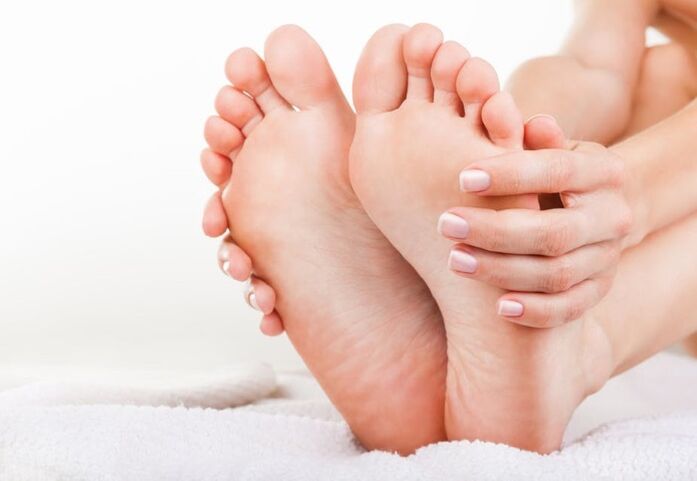
Skin and toenails are very susceptible to infections. Most often, the disease develops in people with reduced immunity. Immunity is weakened if a person suffers from chronic diseases, especially of the gastrointestinal tract, so he is forced to treat them, is subject to stress and works in dangerous industries.
Causes of fungi
People who take aggressive drugs for a long time, such as antibiotics, are at risk.
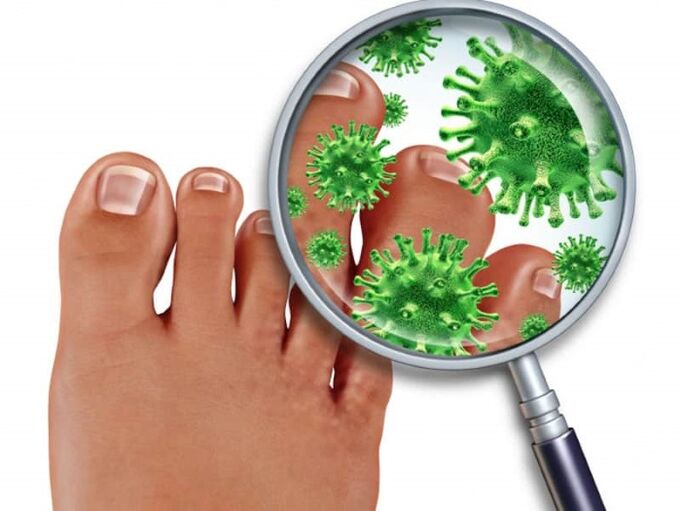
Age-related changes in the acid-base balance of the skin, reduced blood circulation in the extremities, injuries to the toes, diabetes create more than favorable conditions for the development of fungi in the body.
Stages of disease development
The fungus begins to develop on the skin between the toes, where small cracks appear.
Furthermore, the infection spreads to the skin of the feet, itching, burning, throbbing, hyperemia appear. If you do not pay attention to these symptoms, then a fungus develops that eventually affects the nail plate.
External signs of foot fungus in the initial stage
In the initial stage of the disease, the nail does not lose its shine, it retains its pink color, but yellow stripes and spots appear along the edges of the nail.
What does foot fungus look like in a neglected state?
With advanced onychomycosis at home, it is too late to treat the fungus with anything. The nails on the feet change their structure, become thick, peel, crumble, and a characteristic unpleasant smell appears.
The change in the color and structure of the nails depends on the type of fungus that has affected the nails. In an extremely neglected state, the nails become very thick, deform, take the form of claws, and then the nail plate is destroyed. The skin peels off, the dead layers are constantly exfoliated.
Medicines for foot fungus
Many patients wonder: if toenail fungus is detected, how to treat it at home, is it possible without removing the nail plates?After you have discovered the first signs of fungus, you must visit a doctor to prescribe the right treatment.
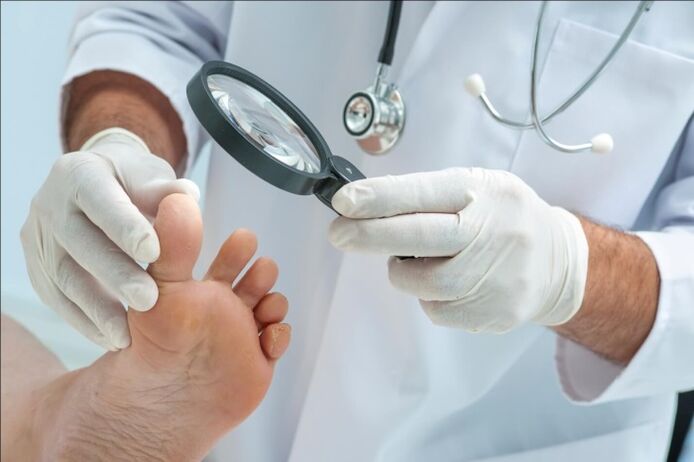
Depending on the stage of the disease, local preparations are prescribed: ointments, varnishes, solutions or tablets with complex action. However, the most important thing in the treatment of fungus is discipline, because each treatment lasts several weeks.
Local application
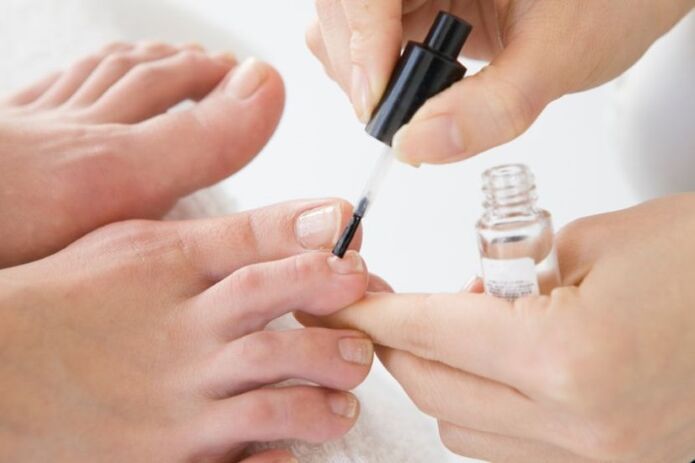
Medicinal varnishes and liquids are produced for the treatment of nail fungus:
- Varnish from the morpholine group.
- Varnish belonging to the oxypyridone group.
- Varnish, whose active ingredients are formic aldehyde and a mixture of enzyme proteins.
- Spray from the allylamine group.
- The serum product based on rye enzyme filtrate is sold complete with disposable nail files. The kit includes a diary and templates to track nail changes.
- Drops belonging to the group of allylamines.
- The agent from the imidazole group is available in the form of a kit: a waterproof patch, a dispenser and a scraper are attached to the ointment.
Systemic action
Systemic drugs are taken orally. They affect the entire organism, so they can be used only on the recommendation of a doctor, taking into account contraindications. With onychomycosis, all medications are taken for several months, while the nail plate changes.
- A broad-spectrum drug from the triazole group. It is available on prescription. In case of onychomycosis, it is taken within 3 months.
- Doctors do not recommend antibiotics from the grisana group in the initial stages of the disease.
Traditional methods of treating foot fungus
If you have found toenail fungus, traditional medicine will tell you how to treat it at home. Folk remedies must be combined with medicines.
The treatment will give results if, before each use, the legs are steamed for 15-20 minutes in a hot bath with the addition of laundry soap or tar, salt or soda, and then the skin layer and the diseased nail are removed with nail files.
If, according to the recipe, the product must be applied to the nail with a stick or stick, then a separate tampon must be used for each nail.Manicure tools must be disinfected after each procedure.
Iodine
Iodine is the most popular folk remedy for fungus. For the treatment of nails, it is necessary to apply a 5% iodine solution to the affected nails twice a day for a month. Contact with 5% iodine solution on the skin can cause burns.
Therefore, another common method is iodine baths. It is enough to drop a few drops of iodine in a bowl of hot water to color the water and keep your feet for 20 minutes. After the bath, dry your feet and apply an antibacterial ointment.
Important: iodine treatment is contraindicated for people with thyroid problems!
Vinegar
Vinegar is widely available at home and is very effective in the treatment of toenail fungus, as scientific studies have shown that the fungus is afraid of an acidic environment and dies quickly. In order not to treat burns, apple cider vinegar should be used, although less is preferable to vinegar essence in a concentration of 9%.Treatment options:
- Apply vinegar to your nails, put on cotton socks and go to bed.
- Pour 250 ml of vinegar into a bowl of hot water, hold for 10 minutes before going to bed, and then apply the prescribed cream.
Ammonia
Ammonia has a disinfecting effect. Compresses are used for treatment. 1 tablespoon of ammonia is diluted in a glass of warm water.
The resulting solution is moistened with a cotton cloth, wrapped around the foot, plastic bags and socks are placed on top. Go to bed with this compress.
Those who are uncomfortable sleeping in bag socks can be recommended to rub a mixture of ammonia and glycerin in the ratio 1: 1 into the affected areas. The resulting mixture is applied to the nails and skin twice a day, in the morning and in the evening.
Hydrogen peroxide
Experts recommend using hydrogen peroxide in the initial stages of the disease, when the fungus has not yet deeply affected the nails.
- A cotton swab is moistened with a 3% peroxide solution, applied to the affected nail and kept for at least half an hour. After that, the dressing is removed, the softened areas of the skin are cut off with scissors, the nail is removed with a file and an antifungal agent is applied.
- A very effective remedy is a paste of baking soda (2 tablespoons), table salt (1 tablespoon) and hydrogen peroxide (1 teaspoon), all mixed with 4 tablespoons of warm water. The mixture is applied to the nails, covered with a bandage. Apply twice a day for 40 minutes for a month.
Propolis
In addition to useful properties, bee glue has a pleasant aroma. People who are allergic to honey and other bee products should not use this product. Propolis itself and its 20% tincture are used to treat onychomycosis.
Propolis in its pure form is applied for half an hour to the affected nails several times a day.
Propolis tincture can be bought at a pharmacy or made independently.
To make it at home, 20 g of propolis is poured into 80 ml of alcohol and infused for 2 weeks.
The skin around the affected nails is lubricated with the resulting tincture, and a poultice is placed on the nails themselves.
If the fungus is working, then the concentration can be increased by pouring propolis with alcohol in a ratio of 1: 1.But in this case, the wraps should only be done on the nails, the skin should be protected with a cream before the procedure to avoid burns. Also, propolis tincture can be added to baths in which the legs are steamed before using the medicine.
Tar
Birch tar is obtained by boiling birch bark in special cauldrons. To treat nail fungus at home, tar can be bought at the pharmacy. It has an anti-inflammatory effect, heals wounds, and dries the skin better than the above-mentioned drugs.
The tar is applied to the skin and nails for two hours. The skin can be damaged, cracked and scratched, it is not dangerous. After two hours, the remains are removed with a cotton swab, a moisturizing cream is applied, after which socks are put on. The disadvantages of the product are the dark color and strong unpleasant smell, which makes it difficult to use the product before going outside.
Tar has a drying effect, so people prone to dry skin should use it with great care.Besides pure tar, the use of tar soap gives good results.
For dressings, soap is rubbed on a grater, mixed with water, you can also add baking soda. The resulting paste is applied to the nails, the fingers are wrapped in a film, socks are put on top. After a few hours, the dressing can be removed, the remains can be washed off with warm water.
Lemon
Since fungi are afraid of acid, lemon is a logical solution in the treatment of fungi.
- Compress of lemon slices is the simplest way to treat fungus in the initial stage. Thinly sliced fruit is applied to the nails, covered with a film, put on socks and left overnight.
- Small lemons can be placed on the finger like scallops, fixed with a bandage and left overnight.
- Freshly squeezed lemon juice can be applied to the nails in the morning and in the evening. It is important to remember that lemon juice is very acidic, so people with sensitive skin may experience irritation. You can also mix lemon juice with olive oil and rub this mixture on your nails.
An egg
Raw chicken eggs are also used in the treatment of fungus. A common folk recipe is an egg dissolved in vinegar. To do this, the washed egg is poured with vinegar essence so that it is completely covered.
The container is closed and placed in a cold place for a few days, but not in the refrigerator, until the shell is completely dissolved. This usually takes about a week. Egg films are removed from the solution, the liquid itself is mixed with fat, for example, butter.
The resulting ointment is applied to the affected nails, wrapped in a film. A mixture of chicken protein, vinegar essence and vodka also helps.Egg products should be stored in the refrigerator.
Garlic
Garlic should be used very carefully in the treatment of fungi, because garlic juice can cause burns.
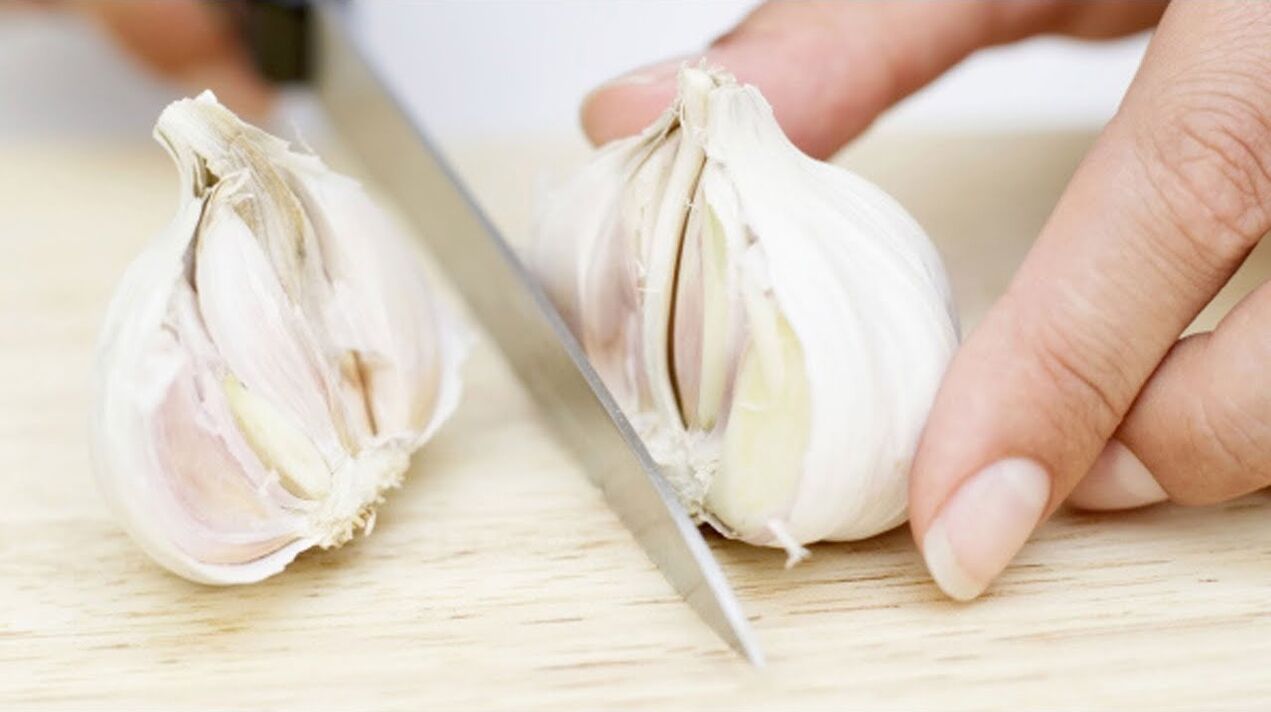
On the diseased areas, you can apply garlic pulp and juice in its pure form, as well as in the form of an alcoholic tincture and diluted with vegetable oil. For the production of garlic tincture for 50 ml. for vodka you will need 4 cloves.
Celandine
Alcohol tincture of celandine is used as a systemic drug in the treatment of toenail fungus. An alcoholic tincture is prepared at home in the amount of one part celandine plant to 10 parts vodka.
It is important to remember that celandine is very poisonous, so it should be treated with more caution than other medicinal plants.
20 drops of alcohol tincture are taken orally half an hour before meals. People with bronchial asthma should not take celandine internally. External use of celandine is effective. Nails affected by onychomycosis can be lubricated with fresh celandine juice. At the same time, the juice must not get on healthy skin, otherwise you can get severe burns.
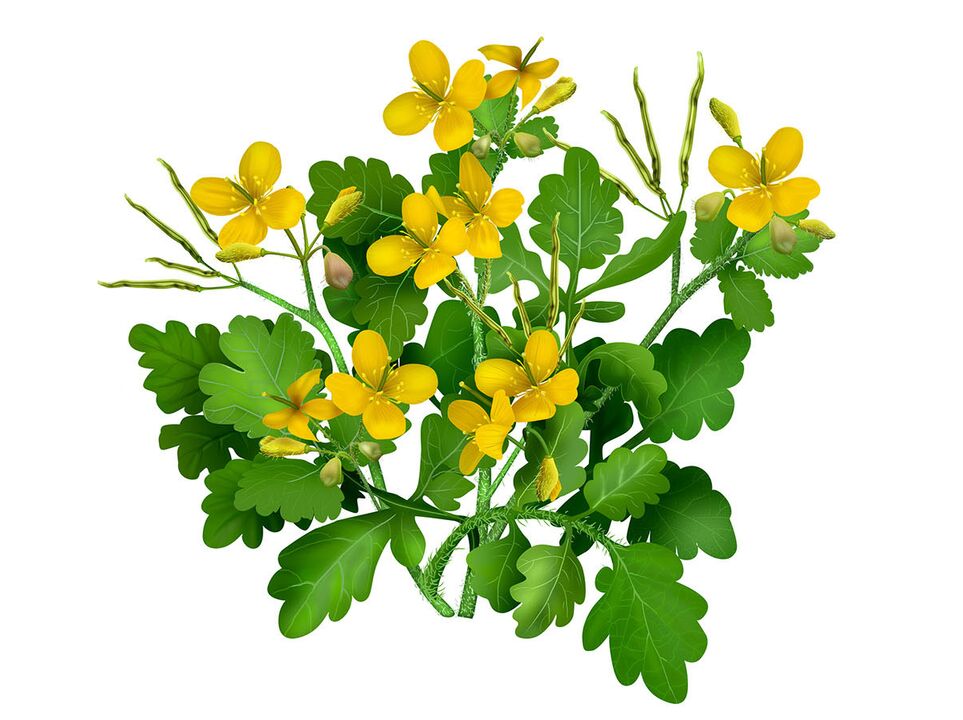
To protect against burns, you can apply cream to the skin around the nails. A gentler agent is celandine oil, but it should not be applied to damaged skin either. Celandine oil can be bought at a pharmacy or prepared independently.
To do this, the collected stems, leaves and flowers of the plant are dried, placed in a glass container and poured with the same amount of warm vegetable oil. After keeping the container for a week in a dark, cool place, the oil is filtered and diluted with vegetable oil in a ratio of 1: 1.
Rowan
An effective remedy is a poultice made of fresh pine leaves. The leaves are washed, crushed, the resulting pulp is applied to the affected nails and covered with a bandage.
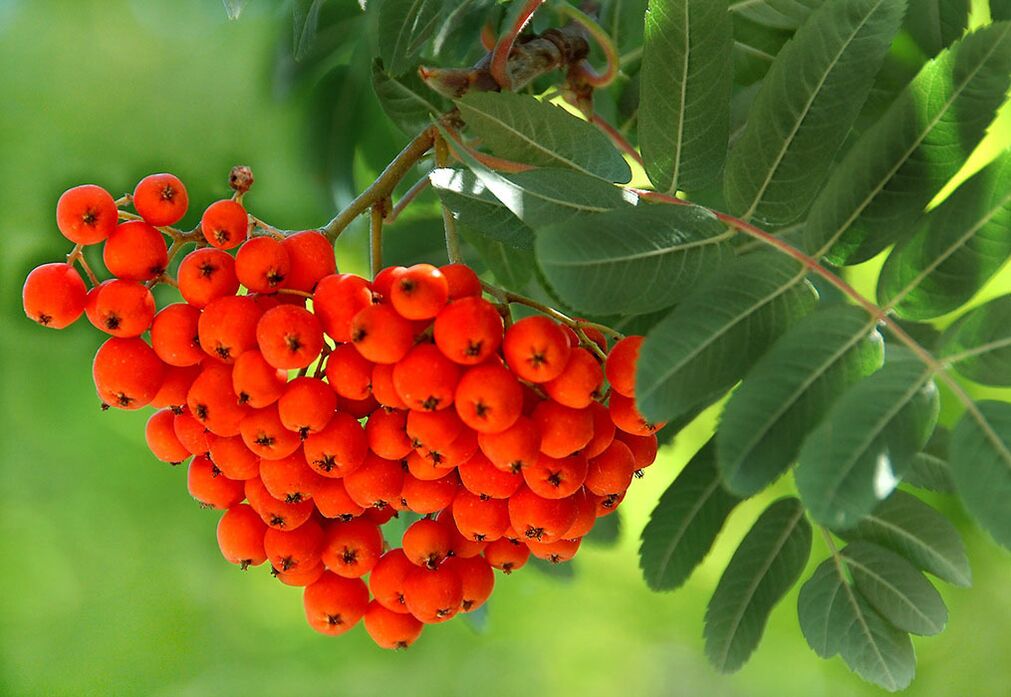
The result of such treatment will be visible no earlier than a month.
Tea tree oil
Essential oils are widely used for cosmetic and medicinal purposes. Tea tree oil is considered the most effective against nail fungus. You can simply rub it into the nail plates or add 15-20 drops to foot baths. The best result is the use of tea tree oil in the initial stages of the disease.
Tea mushroom
Kombucha is a symbiosis of acetic acid bacteria and yeast. It was brought from Japan, so it is also called Japanese mushroom or jellyfish. Kombucha is grown in weak sweet tea.
If you leave the mushroom in the container for several weeks, it will grow and the liquid will become carbonated and have a sour taste.Bacteria secrete acid and even ethyl alcohol. Therefore, kombucha is effective for treating yeast infections at home.
A small piece is separated from the top layer, placed on the nail, covered with plastic film and went to bed. In the morning, the coating is removed, the softened parts of the nail and skin are cleaned. Wraps are repeated until a healthy nail grows. You can also apply kombucha, ground into a slurry, to your nails.
Golden Mustache Tincture
Golden whiskers have anti-inflammatory and antibacterial properties. Golden mustache tincture is easy to prepare at home.
To do this, 50 segments of the plant are poured with 2 glasses of vodka and infused for 10 days. Apply as a poultice.
Kalanchoe
The popular name of this indoor plant is home healer or flower of life. Its anti-inflammatory and wound healing properties are widely known. To treat nail fungus, the skin is removed from a fresh Kalanchoe leaf, applied to the nail, fixed with adhesive tape and left overnight.
In the morning, the coating is removed, the softened area of the nail is removed with a file. The procedure is repeated until the nail plate is completely restored. If a burning sensation is felt, the dressing must be removed to avoid an allergic reaction.
Lilac
Alcoholic tincture of lilac flowers, preferably white, is prepared in the ratio of half a glass of flowers per glass of vodka. After 2 weeks the tincture is ready. Rub into nails daily until a healthy nail grows.
mint salt
One of the main symptoms of fungus is itching. The cooling effect of mint will ease the condition. A poultice made of chopped fresh mint leaves mixed with coarse salt helps well.
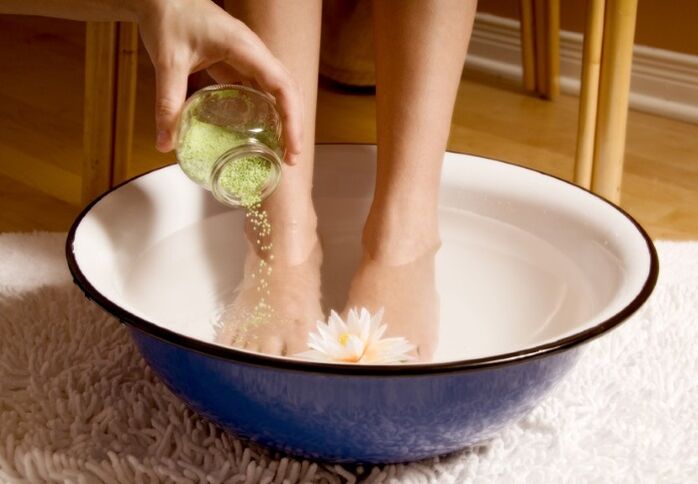
Baths made of boiled mint leaves, dried, with salt dissolved in the infusion are also useful. For 2 liters of infusion, you need 4 tablespoons of salt. Such baths should be done 2 times a day.
poplar buds
Fungal tincture of poplar buds on vodka helps. To do this, a glass of poplar buds is poured with two glasses of vodka and infused in a dark place for 10 days. A poultice made of tincture is applied at night. In the morning, the softened part of the nail is cut off.
Soda
Baking soda, as an alkali, does not kill fungi, but it perfectly softens the nail plates and the skin of the feet, which allows the agent that is then applied to penetrate as deeply as possible. To do this, before applying the drugs prescribed by the doctor or traditional medicine, it is necessary to make a bath with a hot solution of soda soap.
After that, the softened layers of the nail or skin can be removed and the medicine applied to the areas. The use of soda alone does not give an effective effect.
White
Belina is a bleach known to housewives.The main component is chlorine. The tool is very caustic, it must be used with great care.
The room where the procedure is performed must be well ventilated. Under no circumstances should this medicine be used by pregnant or lactating women.
Also, do not use the medicine for asthmatics, allergy sufferers, as well as for all those whose skin around the nails is inflamed or has any damage.
The product is applied to the nail plate with a cotton swab. The product is applied only to the nails, the contact of Whiteness with the skin can cause severe chemical burns.
To protect the skin around the nails, it is necessary to apply an oily cream. The product is washed off after a few hours. Whiteness is used only in the most neglected cases, when other means no longer help.
horseradish
Horseradish root has disinfectant properties. To treat fungus, freshly grated horseradish root is applied to affected skin and nails that have been previously scalded in hot water, wrapped in foil and put on socks. Keep the compress for at least two hours.
Vodka
Most of the mentioned folk remedies are used in the form of alcoholic solutions. Ethyl alcohol has a disinfecting effect.
Coffee
In addition to cosmetic effects, coffee also has medicinal effects, and is also used in the treatment of onychomycosis. It is necessary to brew very strong coffee and let it brew for about half an hour.
Then make a bath of coffee diluted with hot water. After the skin is scalded, the affected areas of the nails and skin should be removed with a nail file, and then the remaining coffee grounds should be applied. Coffee baths strengthen nails and improve skin condition.
Official and traditional medicine offers many remedies for the treatment of fungus. To be successful, it is necessary to start acting at the first symptoms of the disease, especially if the skin and toenails are affected.
The sooner you start treatment, the better the result of treatment at home. Treatment of nail fungus requires patience and discipline, because all the described drugs must be applied for several weeks or even months, until the nail plate changes.



























